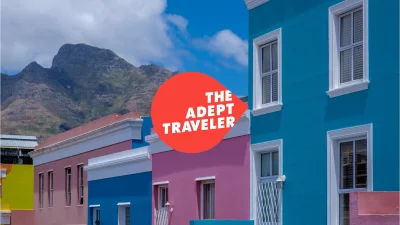Namibia
Imagine stepping into the vast, untamed wilderness of Namibia, where the earth itself appears to breathe beneath your feet. Travel to Namibia to be captivated by its endless horizons of sun-drenched dunes that roll like golden waves into the serene Atlantic Ocean. This land of stark contrasts offers not just a feast for the eyes but an orchestra for the senses—the distant roar of an oryx across the savannah, the scent of rain on parched soil, and the taste of biltong, a local delicacy. Immerse yourself in the haunting beauty of the otherworldly Skeleton Coast or witness the ethereal dance of the majestic Namib Desert, the world's oldest desert with landscapes that seem painted by celestial hands. Travel to Namibia to discover an experience that speaks to the soul, as you explore its captivating wildlife and vibrant cultures under a canopy of stars that stretches into infinity.
Namibia Travel Season
Travel to Namibia offers an enticing combination of breathtaking landscapes, diverse wildlife, and rich cultural experiences. When planning your trip, understanding the best travel seasons can enhance your journey. The peak travel season in Namibia typically aligns with the dry winter months from May to October. During this period, travelers are met with pleasant weather, comprising warm days and cool nights. Rainfall is scarce, providing optimal conditions for outdoor activities and wildlife viewing, especially in Etosha National Park, where animals congregate around waterholes.
Exploring Namibia at its peak season might mean larger crowds, especially at popular attractions like Sossusvlei and Swakopmund. However, it remains the most sought-after time for travel to Namibia, ensuring a rewarding experience for wildlife enthusiasts seeking to witness the spectacular game-viewing opportunities. The inviting temperatures and clear skies provide a perfect backdrop for discovering Namibia's iconic landscapes, such as the towering dunes of the Namib Desert and the rugged terrain of Damaraland.
Ideal Travel Times
While the peak season is a fantastic time to explore Namibia, those seeking smaller crowds might consider visiting during the shoulder seasons. The months of April and November are particularly appealing. April marks the transition from the rainy season to the dry season, presenting lush landscapes combined with decreasing rainfall. Meanwhile, November witnesses the onset of the rains, with sporadic showers bringing life to the otherwise arid scenery. These months offer the advantage of fewer tourists and often come with more affordable accommodation rates. It's an ideal time for travelers who appreciate solitude and tranquility while exploring Namibia's natural wonders.
Seasonal Variations and Travel Experiences
The summer months, from December to March, constitute Namibia's low season due to the high temperatures and increased likelihood of rainfall. Despite this, travel to Namibia during the off-peak period holds its charms. The landscape transforms dramatically, showcasing verdant vistas that starkly contrast with the ochre hues of the desert. Birdwatchers will find these months rewarding, as migratory birds flock to the area. Additionally, visiting during this time ensures a more relaxed travel experience, with quieter attractions and significant savings on tours and accommodations.
Namibia hosts several vibrant local events and festivals throughout the year that can enrich your travel experience. The Windhoek Karneval, held in March, brings a taste of German heritage with colorful parades and performances. In August or September, the Oruuano Cultural Festival celebrates Namibia's diverse cultures through music, dance, and traditional cuisine. These events offer travelers a unique glimpse into Namibian culture and traditions, making for a memorable journey.
Travel to Namibia promises diverse experiences tailored to every type of traveler. By selecting the right season, you can maximize your enjoyment, whether you're there for the wildlife, landscapes, cultural events, or simply the serene solitude inherent in Namibia's striking environs. Every season presents unique facets of this beautiful country, ensuring a rich and fulfilling travel adventure.
The Weather and Seasons in Namibia
When planning a journey to Namibia, understanding the weather patterns can greatly enhance your travel experience. Namibia, located in southern Africa, boasts a primarily arid climate with various temperature ranges and seasonal changes that can significantly impact your itinerary. Travelers can expect a broad spectrum of conditions, from scorching hot days to chilly nights, depending on the region and time of year.
Seasons in Namibia
Namibia experiences distinct seasons, each bringing unique weather characteristics. The country predominantly has a rainy season and a dry season. The rainy season stretches from November to April. During this period, temperatures soar, often reaching 95°F (35°C) or higher in the daytime, while night-time temperatures may drop to around 64°F (18°C). Rainfall is generally sporadic, with showers sometimes heavy but infrequent, especially in the central and northern regions, which are the wettest areas of Namibia.
Conversely, the dry season in Namibia runs from May to October. It's marked by cooler temperatures and clear skies, making it a popular time for travelers to visit Namibia. Daytime temperatures are milder, ranging from 68°F to 77°F (20°C to 25°C), while nights can be chilly, with temperatures dropping to as low as 41°F (5°C), particularly in desert areas like the Namib Desert. This season offers ideal conditions for wildlife viewing, as animals gather around waterholes, providing excellent opportunities for safaris.
Regional Variances
Namibia's diverse geography influences its climate significantly, creating regional variances. The coastal areas, influenced by the cold Benguela Current, have a more temperate climate. Swakopmund and Walvis Bay, popular travel destinations, often experience fog and cooler temperatures, with averages around 68°F (20°C), making them perfect for those who find the inland heat overwhelming. The interior, particularly areas like the Kalahari Desert, can become extremely hot during summer months, while winter mornings can be surprisingly frosty.
Humidity and Rainfall Patterns
Travel to Namibia during the wet season might introduce you to occasional thunderstorms, primarily in the northern regions such as Etosha National Park and Caprivi Strip, where lush landscapes emerge briefly, showcasing a stark contrast to the otherwise arid environment. Despite the potential for rain, overall humidity remains relatively low, averaging around 30% during the dry season and slightly higher in the wet season.
Best Time to Travel to Namibia
The most favorable time to travel to Namibia is typically between May and September during the dry, cooler months. This period offers excellent conditions for exploring the country's stunning landscapes, including the iconic dunes of Sossusvlei, the rugged terrain of Damaraland, and renowned National Parks teeming with wildlife. Since these months coincide with peak travel season, it's advisable to book accommodations and excursions well in advance.
For those interested in local events tied to the changing seasons, Namibia hosts several unique festivals and cultural gatherings. The Owela Festival, celebrating Namibian heritage, occurs in August, while various music festivals, such as the Windhoek Jazz Festival, offer travelers an enriching insight into the country's vibrant cultural scene.
Accepted Payment Methods and Other Payment Information in Namibia
When planning your travel to Namibia, understanding the payment options and financial landscape can significantly enhance your experience. The local currency in Namibia is the Namibian Dollar (NAD), which is linked to the South African Rand (ZAR) at a 1:1 exchange rate. Both currencies are accepted throughout the country, making it convenient for travelers from neighboring regions.
For those who prefer electronic transactions during their travel to Namibia, credit card usage is widespread in urban areas and major tourists' hubs. Visa and Mastercard are the most commonly accepted credit cards and can be utilized at hotels, restaurants, and larger retail establishments. American Express acceptance is more limited, and Discover cards are rarely recognized, so it is advisable to carry a Visa or Mastercard if possible. Some remote areas and smaller businesses may prefer cash payments, stressing the importance of keeping some local currency on hand.
Despite the increasing trend toward digital payments, cash remains an essential part of daily transactions in Namibia. ATMs are widely available in cities and towns, providing easy access to local currency. However, when traveling to more rural areas or exploring Namibia's natural landscapes, ATM availability may be sparse, making it wise to plan ahead. When withdrawing from ATMs, travelers should be aware of potential transaction fees and check with their bank regarding international withdrawal charges.
Tipping etiquette in Namibia aligns with common international standards. Although not obligatory, tipping is appreciated for good service. At restaurants, a tip of 10-15% of the bill is customary. In hotels, a small tip for housekeepers and porters is warmly received. For guided tours, tipping tour guides and drivers for excellent service further promotes the industry's standard of hospitality.
Other useful payment information for those who travel to Namibia includes the growing popularity of mobile payment solutions. While still developing, some establishments in urban areas do offer mobile payment options, adding an extra layer of convenience. Keeping a diverse mix of payment methods, including cash, credit cards (preferably Visa or Mastercard), and a mobile payment setup, will ensure a smooth financial experience during your exploration of Namibia.
Why You Should Travel to Namibia
As you embark on a journey to discover new horizons, travel to Namibia promises an array of unparalleled experiences that will captivate your senses and broaden your perspective. This Southern African gem offers diverse landscapes, captivating wildlife, rich culture, and unique adventures that make it an irresistible destination for any traveler.
Mesmerizing Landscapes and Natural Wonders
Travel to Namibia is synonymous with the chance to witness some of the world's most striking landscapes. The towering dunes of Sossusvlei in the Namib Desert are a visual spectacle, with their rich hues of orange and coral under the ever-changing sky. These are the tallest dunes in the world, drawing photographers, adventurers, and nature enthusiasts alike, eager to capture their beauty.
Wildlife Safaris in Etosha National Park
Embarking on a safari in Namibia’s renowned Etosha National Park is an opportunity to encounter a rich array of wildlife against a backdrop of stark white salt pans and arid savannas. Home to elephants, lions, black rhinos, and hundreds of bird species, Etosha offers a majestic and secluded wildlife experience unique to Namibia.
Cultural Richness and Heritage
Namibia's cultural tapestry is woven from the diverse tribes and traditions that call this nation home. Visitors can immerse themselves in the indigenous cultures by visiting Himba villages, where traditional lifestyles and customs are painstakingly preserved. Engaging with the local communities provides a profound cultural experience that enriches travel to Namibia.
Adventure Activities for the Thrill-Seeker
For those with a thirst for adventure, Namibia offers adrenaline-filled activities such as sandboarding on its famous dunes, quad biking, and skydiving. The rugged terrain and unspoiled wilderness provide the perfect backdrop for thrilling outdoor pursuits that get your heart racing while you explore Namibia's wild side.
Stargazing in the Pristine Namibian Sky
The Namibian sky offers some of the best stargazing opportunities on the planet. With minimal light pollution, the clarity and brilliance of the stars is unmatched. Whether you're camping in the desert or staying at a luxury lodge, the celestial display is a nightly spectacle that adds an ethereal layer to your travel experience in Namibia.
Skeleton Coast’s Mysterious Allure
The Skeleton Coast is one of Namibia's most enigmatic destinations, stretching along the Atlantic Ocean with its shipwrecks and roaring surf. Visitors are drawn to the sense of wild isolation and raw natural beauty that defines this coastline, where the fog-laden beaches tell stories of maritime mystery and adventure.
Swakopmund’s Coastal Charm
Blending German colonial history with coastal charm, Swakopmund is a unique town where travelers to Namibia can relax by the sea or set off on exhilarating desert excursions. Its architecture, seaside promenades, and local markets offer a delightful mix of relaxation and exploration.
Fascinating Geological Formations
Namibia's geological features are as captivating as they are varied. Visit the ancient rock engravings at Twyfelfontein, the dramatic Fish River Canyon, or the petrified forest, where fossilized trees date back millions of years. These marvels not only illustrate the earth's history but also offer breathtaking vistas and intriguing insights into the natural world.
Solitude and Tranquility in a Vast Wilderness
Travel to Namibia is synonymous with solitude and the invigorating sense of peace found in its expansive landscapes. The country boasts one of the lowest population densities in the world, providing ample opportunity for introspection and connection with nature far from the rush of modern life.
Commitment to Conservation and Sustainability
Namibia is a global leader in conservation, with much of its land protected through national parks and wildlife reserves. Visitors can travel with confidence knowing that their stay supports sustainable tourism initiatives that conserve wildlife and uplift local communities. This commitment to protecting natural resources ensures that Namibia remains a pristine and unspoiled destination for generations to come.
The History of Namibia
Travel enthusiasts drawn to rich and complex historical narratives will find a fascinating tapestry when they travel to Namibia. The country's history is a reflection of its diverse cultural heritage and the profound influences of both indigenous populations and European colonizers. Known for its myriad of ancient tribes such as the San and the Ovambo, Namibia serves as a live museum of indigenous history, language, and traditions. The rock engravings at Twyfelfontein, a UNESCO World Heritage site, are one of the earliest artistic expressions in Africa, providing a tangible link to the San people who inhabited the area over 6,000 years ago. This rich cultural backdrop makes Namibia a compelling destination for those wanting to delve into the deep-rooted history of human civilization.
European colonization began in earnest in the late 19th century, leaving a significant imprint on the country's socio-political structure. The German colonial era is particularly noteworthy, and its legacy is visible in the architecture and culture of towns like Lüderitz and Swakopmund. Here, travel enthusiasts can wander through streets lined with impeccably preserved German colonial buildings, offering a glimpse into Namibia's early 20th-century history. The tragic events of the Herero and Namaqua genocides at the beginning of the 1900s, now more widely recognized and studied, form a crucial part of the national narrative. These events serve as a somber reminder of the struggles Namibia underwent during its road to independence, which was finally achieved in 1990.
The independence movement that garnered global attention in the late 20th century also shaped Namibia's modern identity. After a protracted struggle against South African rule, often marked by international appeals for support, Namibia emerged as a proud, independent nation. It’s a vibrant example of post-colonial African resilience and unity. Today, the political landscape of Namibia, characterized by a stable and democratic government, is a testament to its successful transition from a colonial past to an autonomous present. Etosha National Park, one of the largest and most bio-diverse nature reserves in the world, is not only a natural wonder but also a symbol of Namibia's commitment to conservation, which has roots in its long-standing relationship with the land and its inhabitants.
The cultural mosaic of Namibia is further reflected in its art, music, and festivals, such as the joyous Ovahimba Living Museum, providing visitors the opportunity to experience and participate in local traditions. The annual Windhoek Karnival (WIKA), a celebration of the country's German roots, attracts both locals and tourists alike with its vibrant parades and festivities. For history buffs, travel to Namibia offers not only a journey through time but also an immersion into a living heritage that continues to shape the nation's present. Namibia’s historical sites and cultural vibrancy make it an unparalleled destination for those looking to understand how historical narratives influence the modern world. By exploring Namibia, travelers not only witness its past but also engage with its dynamic and ever-evolving cultural identity. This journey into the heart of southern Africa is a compelling exploration of history and culture, woven seamlessly into the captivating landscapes of this unique nation.
The Culture of Namibia
Located in southwestern Africa, Namibia offers a dazzling array of cultural experiences that are as diverse as its vast landscapes. When you travel to Namibia, you are stepping into a world where ancient cultures gracefully mingle with modern influences. The population, though small in number, is as varied as the geographical features of the land, comprising multiple ethnic groups including the Ovambo, Herero, Himba, and San people, among others. The country's cultural heritage is enriched by these communities, each contributing unique traditions and customs that make Namibia a captivating destination for travelers.
Festivals and celebrations play a significant role in the social life of Namibian communities and provide a colorful display of the country's cultural tapestry. One of the most celebrated festivals is the "Enjando," an event that commemorates the Oshiwambo people’s heritage with dance, music, and traditional attire. Another notable event is the "Oktoberfest," reflecting the Namibian-German connection, where one can indulge in German beers and foods. Travel to Namibia during these festival times is a unique chance to immerse in vibrant cultural expressions. This blend of indigenous traditions and colonial influences makes each festivity a mesmerizing experience that travelers should not miss.
The daily customs in Namibia often revolve around communal activities and traditional practices. For instance, the Himba people are renowned for their intricate hairstyles and red ochre body painting, a symbol of beauty and status. Art and craft are deeply rooted in Namibian culture, with women skillfully weaving baskets and men carving beautiful wooden sculptures. Music and dance are integral to life across the country. The rhythms of traditional drums echo across villages during ceremonies, with distinct movements that tell stories passed down through generations. For those who travel to Namibia seeking an authentic encounter, these customs offer a profound appreciation of how deeply interconnected art and daily life are.
Efforts to preserve indigenous cultures in Namibia are evident through various initiatives and cultural centers dedicated to celebrating and maintaining traditional practices. The Namibia Craft Centre, for example, showcases a collection of works from local artisans aiming to sustain traditional craftsmanship. These preservation efforts are essential not only for safeguarding these beautiful cultural expressions but also for offering travelers an authentic insight into the soul of Namibia. This cultural richness, combined with a strong sense of community and heritage, makes traveling to Namibia an enriching and unforgettable experience. The land is a vibrant mosaic of traditions awaiting discovery, ensuring that every visitor leaves with a piece of Namibia embedded in their hearts.
The Culinary Experience of Namibia
Travel to Namibia promises a unique culinary experience that reflects its diverse cultural tapestry. Namibia's food scene is a fascinating blend of traditional African influences and European flavors, particularly German, due to its colonial history. This fusion is evident in both the ingredients used and the cooking techniques. As you travel through Namibia, you'll encounter a range of culinary delights, from hearty cooked meals to indigenous finger foods that are rich in flavor and history. One cannot travel to Namibia without sampling local game meats such as kudu or oryx, often grilled to perfection and served with maize porridge or "pap," a staple in Namibian cuisine.
A must-try dish when you travel to Namibia is Kapana, a popular street food often found in bustling markets. It's a simple yet delicious dish of spicy grilled beef strips served hot with a variety of sauces. Kapana is more than just a street snack; it's a social food that brings people together, capturing the warmth and camaraderie of Namibian culture. Travelers will also savor the robust flavors of Potjiekos, a traditional stew cooked slowly in a three-legged pot over an open flame. For adventurous eaters, Mopane worms are a traditional delicacy—often dried or cooked in a tomato sauce—that offers a taste of Namibia's rich culinary traditions. These experiences resonate deeply with Namibia’s cultural heritage and customs, making your travel to Namibia a gastronomic journey.
Namibia's beverage offerings are equally impressive, complementing its dynamic food culture. The country boasts a burgeoning wine industry, with several vineyards located in the fertile southern regions producing acclaimed bottles. Beer enthusiasts will find Namibia's local brew, Windhoek Lager, particularly refreshing. It’s brewed in accordance with the German Beer Purity Law, a nod to the country's historical roots. For something a bit stronger, try the locally distilled spirit infused with the indigenous Marula fruit, which offers a unique taste of Namibia. These beverages, alongside the hearty dishes, provide an all-encompassing culinary experience for anyone who chooses to travel to Namibia.
Dining in Namibia isn’t just about food, but the atmosphere as well. From open-air markets in Windhoek to upscale restaurants where local ingredients are crafted into fine dining masterpieces, Namibia offers a spectrum of dining experiences. Regular food festivals celebrate the abundant local produce and indigenous ingredients, providing a platform for local chefs to showcase their innovation. As culinary tourism grows, options for vegans and vegetarians are also expanding, with many eateries offering creative plant-based dishes that highlight Namibia's fresh produce. With its robust flavors and diverse offerings, traveling to Namibia is a culinary expedition that invites travelers to explore and savor the heart of its culture and traditions.
What to See and Do in Namibia
Exploring the vast and diverse landscapes when you travel to Namibia will undoubtedly leave you in awe. The tranquil and stark beauty of the Namib Desert is one of the most distinctive features of this country. Adventure seekers will find endless opportunities for exploration among its towering red dunes, especially at Sossusvlei within the Namib-Naukluft National Park. The sunrise or sunset hikes offer an unforgettable experience, blending both physical thrills and breathtaking panoramic views. For photographers, the changing colors of the sands provide a spectacular canvas that shifts with the movement of the sun, creating an endless photo opportunity.
Marvel at the Wildlife at Etosha National Park
For wildlife enthusiasts, a trip to Namibia would not be complete without visiting Etosha National Park. Home to an abundant array of wildlife, including elephants, lions, and the endangered black rhino, Etosha offers some of the best safari experiences in Africa. Self-drive tours provide a flexible way to navigate the park, while guided safaris elevate the experience with expert insights into the animal behaviors and environments. The unique waterholes scattered around the park attract hordes of animals, offering spectacular photo moments from the safety and comfort of your vehicle or designated viewing platforms.
Discover the Rich Culture of the Himba People
Immerse yourself in the cultural tapestry of Namibia by visiting the Himba communities in the remote Kunene Region. Solo travelers and families alike can take part in cultural tours that offer a respectful introduction to the traditional lifestyle of the Himba people. Witnessing their unique hairstyles, clothing, and living conditions gives a profound insight into their rich heritage. This experience offers the chance to gain a deeper understanding of tribal life and the resilience of these semi-nomadic families in the harsh yet beautiful terrain.
Experience the Mystique of the Skeleton Coast
Known as one of the most enigmatic stretches of Namibia, the Skeleton Coast is a must-visit for those interested in exploring desolate beauty and shipwreck relics. Often shrouded in fog, this dramatic coastline has long been a source of thrilling tales due to its treacherous conditions. Travelers can explore this mysterious area through guided tours that reveal shipwrecks, seal colonies, and the rugged beauty of the Atlantic Ocean meeting the desert. The legendary beauty of the landscape is both haunting and mesmerizing, creating a unique setting for adventurous exploration.
Stroll through the Colorful Streets of Swakopmund
Swakopmund offers something for everyone, from its charming German colonial architecture to its vibrant local markets. It’s an ideal destination for families traveling to Namibia, offering a blend of cultural activities and adventure sports. You can try quad biking on the nearby dunes or savor fresh seafood at one of the quaint restaurants. For those interested in history and heritage, the Swakopmund Museum provides an intriguing look into the town’s colonial past and its development over time.
Cruise the Tranquil Waters of the Zambezi River
The Caprivi Strip in northeastern Namibia is often overlooked but offers a lush contrast to the arid central regions. Perfect for those who enjoy tranquil outdoor settings, a boat cruise along the Zambezi River provides a leisurely way to watch wildlife. From hippos and crocodiles to colorful birdlife, this area is teeming with life. With the gentle rhythm of the water, it's a fantastic way for travelers to unwind, surrounded by verdant landscapes and the sounds of nature.
View Ancient Rock Engravings at Twyfelfontein
Twyfelfontein, a UNESCO World Heritage Site, is perfect for art and history aficionados. This archaeological wonder boasts thousands of rock engravings and paintings, some of which are estimated to be over six thousand years old. Guided tours provide context and fascinating details about the prehistoric peoples who adorned these stones with images of animals, human figures, and geometric symbols. Visiting Twyfelfontein offers a captivating glimpse into Namibia's ancient cultural narratives and artistry.
Savor the Solitude of the Fish River Canyon
As one of the largest canyons in the world, the Fish River Canyon is a jaw-dropping natural formation that commands respect and admiration. For the ambitious traveler, the multi-day Fish River Canyon Hike offers a challenging but rewarding trek through winding paths, exquisite landscapes, and breathtaking viewpoints. While the hike is best suited for experienced adventurers, simply visiting and gazing into the canyon provides a contemplative experience, emphasizing the vastness and timelessness of Namibia's natural wonders.
Explore the Futuristic Ghost Town of Kolmanskop
The ghost town of Kolmanskop speaks to a bygone era of diamond prospecting and its rise and fall. Located in the Namib Desert, this once-thriving community now captivates visitors with its sand-filled homes and preserved infrastructure. Photographers and urban explorers will delight in the eerie, post-apocalyptic atmosphere and the stark contrast between the encroaching desert sands and the remnants of opulent German architecture. Guided tours reveal stories of the town's boom and decline, making it a fascinating stop for history buffs and curious travelers.
Walk the Quaint Towns of Lüderitz
The coastal town of Lüderitz offers a charming mix of colorful colonial buildings and natural harbor views, perfect for travelers seeking a leisurely exploration. Known for its German Art Nouveau architecture, Lüderitz is an excellent region to stroll around, capturing views of picturesque buildings juxtaposed against the wild Atlantic Ocean. The town serves as a gateway to the Sperrgebiet National Park, offering further opportunities for wildlife watching and coastal adventures. With friendly cafes and local artisan shops, it's a wonderful place to relax and soak in a laid-back way of life in Namibia.
Tips & Tricks for Traveling in Namibia
Embrace the Vastness: Explore Namibia by Self-Drive
Travel to Namibia offers a unique experience, especially for those who opt for a self-drive adventure. Renting a 4x4 vehicle provides the freedom to explore the vast landscapes at your own pace. The roads in Namibia are well-maintained but often unpaved, so a suitable vehicle is essential for navigating the diverse terrain. This choice allows you to take in the stunning scenery, from the rolling dunes of Sossusvlei to the rugged coastline of the Skeleton Coast. Ensure you have a robust map or GPS system and plenty of water and fuel as distances between towns can be vast.
Timing Your Travels: Best Time to Visit Namibia
When planning a travel to Namibia, consider the seasons. The dry season, from May to October, is the most popular as it offers prime conditions for wildlife viewing. Namibia's wildlife, including elephants, lions, and rhinos, are more easily spotted around waterholes during this time. The daytime temperatures are pleasant, although mornings and evenings can be chilly in the desert. If you want to avoid crowds and high prices, consider visiting during the shoulder months of April or November. You'll find fewer tourists, cooler weather, and more affordable accommodation options.
Budget Wisely: Making the Most of Your Namibia Adventure
Travel to Namibia can be as luxurious or budget-friendly as you desire. Consider blending your stay between high-end lodges and more affordable campsites. Namibia offers excellent camping facilities with clean, safe environments, perfect for those who cherish the outdoors. Purchasing groceries in larger towns before heading into rural areas will help save on costs. Additionally, local markets provide a chance to sample fresh produce and traditional Namibian snacks like biltong. Remember that fuel and long-distance drives can add up, so ensure you budget for these essentials.
Respect Local Customs and Cultures
When you travel to Namibia, respecting local customs and cultures is crucial. Namibia is home to diverse ethnic groups, including the Himba in the north and the San people. If you plan to visit these communities, approach with respect and curiosity. While photography is often welcomed, always ask for permission first. Learn a few phrases in the local languages such as “Khomas” for hello in Nama-Damara; it’s a small gesture that is highly appreciated. Engage with locals to learn more about traditional ways of life and cultural heritage.
Capture the Beauty: Photographer's Paradise
Namibia is a dream destination for photographers, with its dramatic landscapes and unique light conditions. If your travel to Namibia is fueled by photography, Sossusvlei, with its towering red dunes and white clay pans, offers a spectacular setting. The Fish River Canyon, the largest in Africa, provides breathtaking panoramic views. Ensure you travel with sufficient memory cards and batteries, as electricity might not be available at remote locations. The golden hour, just after sunrise or before sunset, offers the perfect lighting to capture Namibia’s natural beauty.
Unplug and Reconnect with Nature
One of the most rewarding experiences when you travel to Namibia is the chance to reconnect with nature. Venture off the grid to remote locations like the NamibRand Nature Reserve, where night skies are filled with the brilliant display of stars due to minimal light pollution. Many lodges and campsites lack Wi-Fi, providing an excellent opportunity to disconnect from the digital world and enjoy the solitude and beauty of the natural surroundings. Immerse yourself in activities like guided bush walks or hot air balloon rides over the desert for a closer interaction with the wild.
Learn the Basics of Desert Survival
As much of Namibia’s allure lies within its desert landscapes, understanding basic desert survival tips can enhance your travel experience. Always carry extra water; dehydration can occur quickly in the dry environment. When out exploring or hiking, wear a wide-brimmed hat, sunscreen, and light, breathable clothing to protect against the harsh sun. Navigation skills are also vital; always inform someone of your plans when venturing into remote areas. These precautions ensure a safe and enjoyable experience as you traverse Namibia’s mesmerizing desert vistas.
Experience the Wildlife Up Close
A travel to Namibia is incomplete without witnessing its diverse wildlife. Etosha National Park is one of Africa's preeminent wildlife reserves, home to a multitude of species and the famous Etosha Pan. The park's waterholes are ideal spots for wildlife enthusiasts to capture animals in their natural habitat. Consider staying within the park, which allows early access to prime viewing areas. Guided tours offer expert insights from local guides, enhancing your understanding and appreciation of the wildlife interactions you witness.
Stay Safe: Health and Safety Precautions
Safety is of utmost importance when planning your travel to Namibia. While Namibia is generally safe and welcoming, standard precautions are advisable. Consult with a health professional about vaccinations and malaria prophylaxis before your trip, particularly if you are visiting northern regions. Travel insurance is a must, covering unforeseen medical expenses and travel disruptions. Be cautious with wildlife; always maintain a safe distance and adhere to park guidelines. Remember, Namibia has a low crime rate, but it’s prudent to take general precautions and stay aware of your surroundings.
Join a Small Group Tour for Shared Experiences
For solo travelers or those new to African travel, joining a small group tour can greatly enhance your travel to Namibia. Such tours offer structured itineraries, ensuring you catch all the essential sights while sharing the experience with like-minded adventurers. Tour operators often have pre-arranged accommodations and park entries, saving time and hassle. These tours often incorporate unique local activities and offer cultural insights that might be harder to arrange independently, providing a balanced mix of structure and adventure.
What To Know Before You Go to Namibia
When planning your journey and travel to Namibia, it's essential to be well-informed about the entry requirements and local customs to ensure a smooth and enjoyable experience. For many nationalities, including those from the European Union, the United States, and Canada, a visa is not required for stays of up to 90 days for tourism purposes. However, travelers should check the latest visa policies as these can change. A passport valid for at least six months beyond your entry date is mandatory.
Travelers should also be aware of the recommended vaccinations when traveling to Namibia. It's advisable to be up-to-date on routine vaccinations such as measles, mumps, rubella (MMR) and diphtheria-tetanus-pertussis, along with hepatitis A and B, typhoid, and rabies, depending on your specific itinerary and activities. Malaria is present in certain regions, particularly in northern Namibia, so it is wise to consult with a healthcare professional about preventive medication.
Local Customs and Etiquette
Understanding local customs and etiquette is vital while traveling to Namibia. Namibians are generally friendly and polite, and a handshake is a common form of greeting. It's important to dress modestly, especially when visiting rural areas or local communities. Always ask for permission before taking photographs of people, especially in indigenous communities.
Transportation Options
Travel within Namibia can be an adventure, given its vast terrain and beautiful landscapes. Car rental is a popular option, offering the flexibility to explore at your own pace. However, driving in Namibia requires caution, as roads can vary from well-paved highways to gravel tracks. For those preferring public transport, long-distance buses and shared taxis are available, but schedules can be erratic. Domestic flights between major cities and attractions provide a quicker, albeit more expensive, alternative.
Tipping Culture
Tipping is appreciated in Namibia, though not obligatory. In restaurants, it is customary to leave a tip of around 10% for satisfactory service. In hotels, a small tip for porters and housekeeping staff is considered courteous. When taking taxis, rounding up the fare is a common practice.
Health Precautions
Beyond vaccinations, other health precautions should be noted when you travel to Namibia. Drinking bottled water is recommended, especially in rural areas, to avoid waterborne diseases. Having comprehensive travel insurance is highly advised to cover medical expenses, as well as unforeseen events like trip cancellations or theft.
Communication Tips
English is the official language in Namibia, making communication relatively straightforward for English-speaking travelers. However, locals frequently speak indigenous languages such as Oshiwambo, Nama/Damara, and Afrikaans. Learning a few common phrases can be a friendly gesture and is always appreciated. Simple greetings or expressions such as "Hello" (Ola in Oshiwambo) and "Thank you" (Dankie in Afrikaans) can go a long way in making connections with locals during your travel to Namibia.
Accessibility in Namibia
Traveling to Namibia offers an incredible experience filled with diverse landscapes, rich cultures, and unique wildlife. As the tourism industry in Namibia grows, so does the emphasis on providing accessibility for travelers with various needs. Travelers can expect increasing improvements in facilities and services that accommodate those with limited mobility, visual, or auditory impairments. Understanding the current state of accessibility is vital for visitors aiming to explore Namibia comfortably and inclusively.
Physical Accessibility for Travelers to Namibia
While Namibia is increasingly mindful of travelers with limited mobility or who use wheelchairs, the country's rugged terrain can present challenges. Urban areas like Windhoek and Swakopmund offer more accessibility-friendly infrastructure. In Windhoek, many public buildings and shopping centers feature ramps and elevators, while Swakopmund offers smoother pathways and easier access to beach areas.
Several national parks in Namibia are also making strides in accessibility. The Etosha National Park, for instance, provides some accommodations for travelers with mobility challenges. Certain camps and lodges have wheelchair-accessible rooms and facilities, and guided safari tours may be arranged with specialized vehicles that accommodate wheelchairs. However, further advancements are needed in rural and remote areas, where pathways and transportation options may not yet be fully equipped to support wheelchairs.
Visual and Auditory Accommodations in Namibia
Efforts to improve accessibility for travelers with visual and auditory impairments in Namibia are gradually gaining momentum. While not all public information boards and signs include Braille or audio options, some heritage sites and museums in major cities offer guided tours for the visually impaired. Guides trained in sign language or with the capability to communicate effectively with individuals who have hearing impairments are becoming more common.
Private tour operators may offer personalized services, including descriptive audio tours and visual aids, to enhance the experience of those with sensory impairments. As demand increases, more service providers are likely to adopt these accessibility features to ensure everyone can enjoy the wonders of Namibia.
Public Transportation and Accessible Accommodations in Namibia
Public transportation in Namibia is relatively limited, with most locals and tourists relying on private taxis or arranged shuttles for travel. However, viable options exist for travelers with disabilities. In urban areas like Windhoek, some taxi companies offer specially modified vehicles equipped for wheelchairs. It's advisable to book these in advance to guarantee accessibility and comfort.
Accommodations in Namibia are progressively adopting inclusive approaches. Many hotels and guesthouses in larger cities provide rooms with accessible features such as roll-in showers, lower counters, and wide doorways. In some cases, lodges and guest farms have made deliberate efforts to cater to the needs of guests with disabilities, offering tailored experiences and support services to facilitate enjoyable stays.
Accessible Tourist Attractions in Namibia
Several of Namibia's renowned tourist attractions are gradually becoming more accessible. The Namib Desert, with its vast dunes, offers several access points where travelers with limited mobility can enjoy the stunning views without extensive walking. Guided tours in specially designed vehicles make it possible for more people to experience this incredible landscape.
The coastal town of Swakopmund is another accessible highlight, known for flat terrain and numerous ramps and paved paths that ease navigation. Here, visitors can partake in various accessible tours, from cultural walks to dolphin cruises, with operators familiar with accommodating diverse needs.
Travel to Namibia presents opportunities for growth and improvement in accessibility. Every year, the country sees positive changes, allowing more travelers to experience its beauty inclusively. By continuing to focus on accessibility, Namibia is committing to a future where every visitor, regardless of their mobility, vision, or hearing abilities, can travel to Namibia and explore its magnificent offerings.
Health & Safety in Namibia
When planning travel to Namibia, there are several safety concerns that travelers should be aware of to ensure a smooth and secure trip. Namibia offers stunning landscapes and unique wildlife experiences, but like any travel destination, it has its own set of challenges.
Water Safety in Namibia
Water safety is an important consideration for anyone traveling to Namibia. The country experiences periods of drought, and access to clean and safe drinking water can be limited, especially in rural and remote areas. It is advisable for travelers to stick to bottled water for drinking and to avoid consuming ice cubes, as these may be made from tap water. Travelers should also practice caution when swimming in natural water bodies, as currents can be unpredictable, and some areas may contain wildlife or parasites that could pose health risks.
Natural Disaster Risks
Though Namibia is generally stable in terms of natural disasters, certain risks do exist. The country has, on occasion, experienced earthquakes and floods. During the rainy season, from November to April, flooding can occur and may affect road travel. It is important for travelers to stay informed about weather conditions and heed local advice if warnings are issued.
Crime Concerns for Travelers
Namibia is considered relatively safe for travelers, but incidents of crime such as pickpocketing, bag snatching, and theft do occur, particularly in urban areas like Windhoek and other tourist hotspots. Travelers should take common-sense precautions such as keeping valuables secure, being aware of their surroundings, and avoiding walking alone at night. It is also recommended to use reputable transport services and to ensure vehicles, including rental cars, are locked when unattended.
Political and Social Stability
Namibia is known for its political stability and is generally free from serious political unrest. However, political demonstrations can occur and may lead to disruptions. Travelers should remain aware of the local news and avoid participating in or getting too close to protests or large gatherings, which could unexpectedly turn violent.
Health and Safety Precautions
Before travel to Namibia, it is prudent for travelers to confirm any required vaccinations, such as those for hepatitis A, hepatitis B, and typhoid. Malaria is present in some regions, especially during the rainy season, so taking preventive measures, including medication and mosquito repellents, is recommended. Namibia's healthcare infrastructure is reasonably good in urban areas, with private hospitals offering superior services, but can be limited in rural parts. Travelers should ensure they have appropriate health insurance that covers medical treatment and potential evacuations.
Other Places You Might Like
Atacama Desert, Chile - Renowned as the driest desert in the world, the Atacama Desert offers a landscape that will be familiar to enthusiasts of Namibia's vast and dramatic desert scenery. Those who travel to Namibia for its unique landscapes will find a similarly awe-inspiring environment in the Atacama Desert. Here, dramatic formations, salt flats, and expansive views create an otherworldly experience that echoes the Namib Desert’s surreal beauty. Travelers enthused by Namibia will delight in the region's stargazing opportunities, as its high altitude, dry air, and lack of light pollution make it one of the best places for astronomical exploration. The parallels between the two destinations offer a compelling reason to explore Chile’s geological wonders.
Wadi Rum, Jordan - This valley, known as the Valley of the Moon, is a mesmerizing expanse of sandstone and granite rock formations. Much like Namibia’s Sossusvlei and the towering dunes of the Namib Desert, Wadi Rum captivates visitors with its breathtaking scale and unique geological features. Adventure seekers who travel to Namibia will relish the opportunity to experience this desert landscape through hiking, jeep tours, and even hot air balloon rides. The rich red sands, dramatic cliffs, and ancient petroglyphs reflect a sense of timelessness and mystery that travelers associate with Namibia, offering a similarly profound and immersive connection to the natural world.
Karakum Desert, Turkmenistan - For those who have traversed Namibia's Skeleton Coast and found joy in its remote and desolate grandeur, the Karakum Desert offers a similarly thrilling experience. Highlighted by its endless sand dunes and the mysterious Darvaza Gas Crater, often referred to as the "Door to Hell," this desert destination promises an adventure like no other. Like Namibia, this is a place where severe beauty and isolation create a unique travel experience. A trip to this less-touristy destination invites travelers to explore one of the world’s most enigmatic deserts, deepening their appreciation for remote and starkly beautiful landscapes.
Rajasthan, India - For travelers who adore Namibia's cultural and wildlife offerings, Rajasthan provides a rich tapestry of history, wildlife, and vast desert landscapes. The region's famous Thar Desert features vast dunes reminiscent of Namibia’s cherished sand seas. Similarly, the culture and architecture of the region rival Namibia’s rich cultural heritage, with its majestic palaces and vibrant traditions. The opportunity to encounter wild Bengal tigers in Ranthambore National Park offers a thrilling counterpart to Namibia's iconic safari experiences. Whether venturing out into the deserts of Jaisalmer or exploring the palatial cities of Jaipur and Udaipur, Rajasthan appeals to those who are captivated by the harmonious blend of natural beauty and cultural richness.
Red Centre, Australia - For those enamored with the red sands and open spaces of Namibia, Australia’s Red Centre offers a comparative exploration. Known primarily for iconic Uluru, or Ayers Rock, this region is also home to the vast deserts and unique ecosystems similar to what travelers find in Namibia. The heart-stirring beauty of the Outback, with its rich indigenous heritage and expansive natural parks such as Kakadu and Kings Canyon, provides an adventure filled with natural wonders and cultural significance. Just as Namibia beckons with its wildlife and natural beauty, the Red Centre offers a captivating journey through Australia’s unique landscapes.
Final Thoughts
Travel to Namibia and embark on an adventure like no other, where the captivating landscapes and diverse wildlife create an unparalleled experience. Namibia's stunning natural beauty, from the towering red dunes of Sossusvlei to the rugged peaks of the Fish River Canyon, offers a breathtaking backdrop for unforgettable explorations. With its rich cultural heritage and welcoming communities, Namibia invites travelers to connect deeply with its ancient traditions and indigenous cultures.
Whether you dream of witnessing the vast herds of wildlife in Etosha National Park or yearning to explore the unique coastal deserts of the Skeleton Coast, Namibia caters to every traveler's sense of wonder and curiosity. From the charm of quaint towns like Swakopmund, blending colonial architecture with vibrant African culture, to the vast, open skies perfect for stargazing, Namibia promises diverse experiences that captivate both heart and soul.
Embarking on a journey to Namibia is not just about exploring new landscapes; it's about enriching your travel experiences with memories of a lifetime. This remarkable destination's untouched beauty and serene landscapes are more than just a picturesque backdrop—they are an invitation to reconnect with nature and embrace the adventure within. So, when selecting your next travel destination, consider Namibia as the place where dreams and discoveries meet at the horizon.
NamibRand Nature Reserve, Namibia
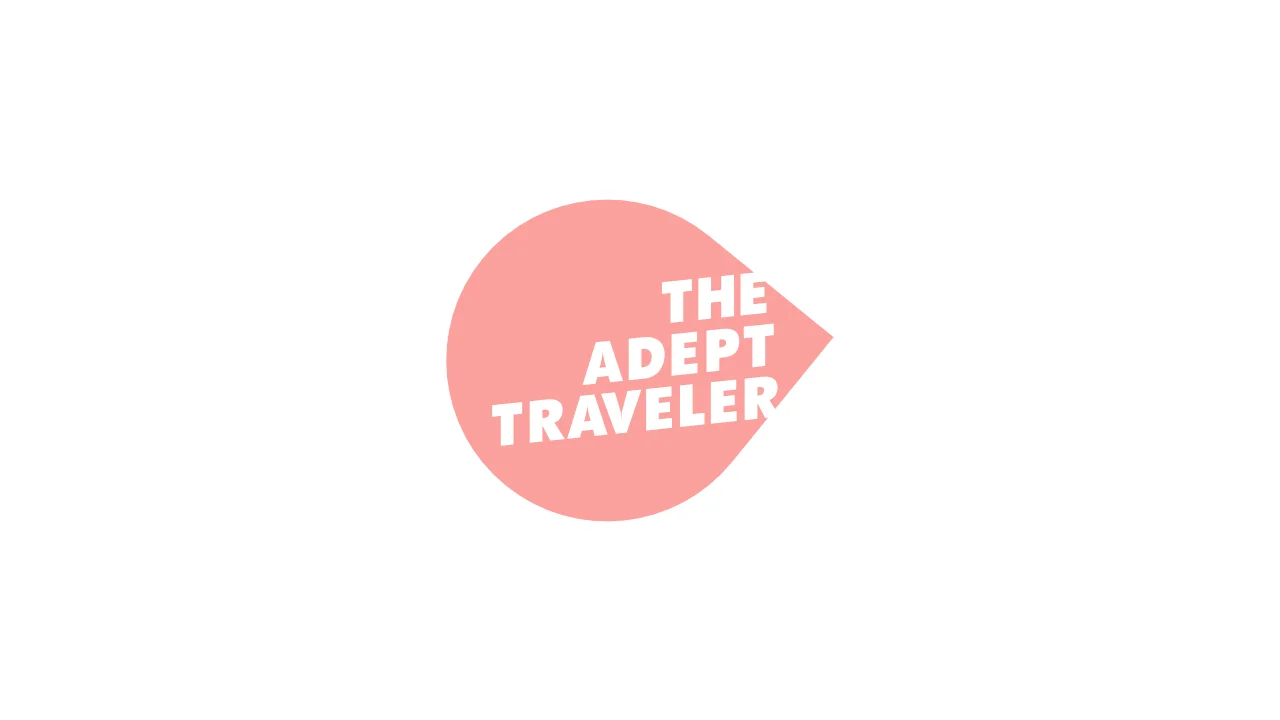
Skeleton Coast, Namibia

Swakopmund, Namibia

Windhoek, Namibia

New Routes Boost Southern Africa Safari Flight Links
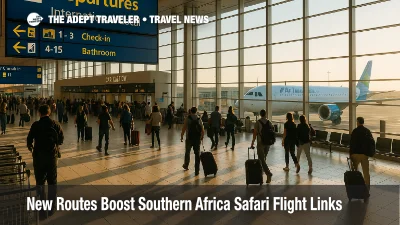
Türkiye South Africa Codeshare Flights From March 2026

Portugal Long Haul Flights Get TAP Premium Economy

2028 World Cruise From Miami To Athens With Azamara
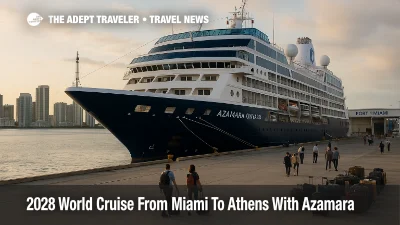
UAE Africa Tourism Plan To Fund $6 Billion Projects

Regional Airline Cancellations Hit African Hubs

Flight delays and airport impacts: October 8, 2025

Mozambique Lowers Advisory, but Northern Hotspots Persist
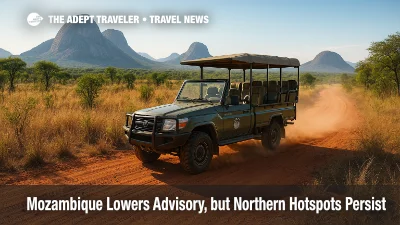
Intrepid Travel Mystery Tour Promises 14-Day African Adventure

How The Gambia Is Turning Trails and River Cruises into a Model of Sustainable Tourism
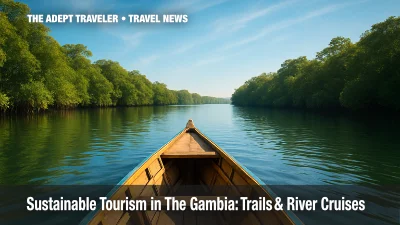
Is It Safe to Drink the Water in Africa? Comprehensive Guide
